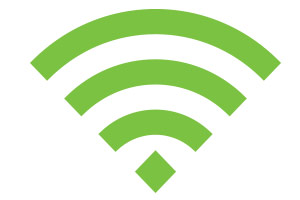Best broadband for tenants
A reliable and affordable broadband connection is likely to be one of the first services you’ll need in your new home, so if your landlord hasn’t set it up for you – where should you start?
What’s available?
Find out what broadband services are available at your new address by using an Ofcom accredited comparison tool on a site like Cable.co.uk. Ofcom accredited services ensure that the information is accessible, accurate, up to date, transparent and comprehensive.
These sites will tell you what providers cover your area; whether you can get superfast fibre optic broadband or ADSL (the older broadband technology run on copper telephone lines), plus estimated download speeds. Next, compare broadband services from providers based on price, speed and data allowance.
Rightmove is currently trialing a broadband service that allows you to check the broadband speed in your area or of a property you’re interested in on Rightmove – check it out here.
Should you bundle?
If you want home phone and pay TV services, bundling them together with broadband from the same provider is usually cheaper than going to different suppliers. Most providers require you to have a landline and pay line rental, so consider if you want inclusive calls thrown in too. It’s possible to get broadband without a landline if you don’t need a home phone at all.
How long can you commit?
You’ll probably need your broadband service to match the length of your tenancy agreement. Home broadband contracts generally run for 12, 18 or 24 months but one, three or nine month deals are also available. One month plans are particularly flexible as they run on rolling contracts that can be cancelled at just 30 days notice without penalty, although you may face set-up costs up to £50.
What are the alternatives?
If you require a temporary broadband solution in between contracts or can’t install a phone line in your new home, mobile broadband could be the perfect solution. It can work out more expensive each month than comparative home broadband deals, but it brings added flexibility. Your options include:
Mobile Wi-Fi: Just like wireless routers deliver broadband connections at home, mobile wireless devices provide a broadband connection on the move. The portable Wi-Fi hubs can wirelessly connect up to 10 devices at a time on a Pay Monthly contract or Pay As You Go (PAYG) basis. If you’re out and about, you can also get online using public Wi-Fi hotspots.
Tethering: Another option is to connect your tablet or laptop to the internet using your smartphone as a hotspot, a process called ‘tethering’. If you have 3G or 4G mobile internet technology on your phone (4G is the newer, faster service), you can tether your tablet or laptop to the internet – either wirelessly or using a USB cable.
3G/4G tablets: You can also just pop a suitable 3G or 4G SIM card into a compatible tablet. SIM-only tablet plans include a data allowance and are available on monthly contracts or PAYG.
Dongles: These pocket-sized gadgets slot into the USB port of your laptop or computer to provide internet access wherever you are. You can pre-load them with credit with PAYG, or take out a contract and pay monthly.
To find out what the broadband speed is like in your area check out Rightmove’s NEW broadband search: https://www.rightmove.co.uk/broadband-speed-in-my-area.html
 This article was written by Hannah Ricci of Cable.co.uk, the Ofcom accredited broadband, TV and phone comparison site.
This article was written by Hannah Ricci of Cable.co.uk, the Ofcom accredited broadband, TV and phone comparison site.
Visit www.cable.co.uk to find the right broadband for your new home.




